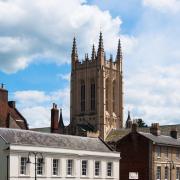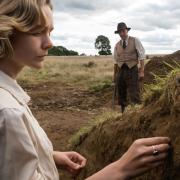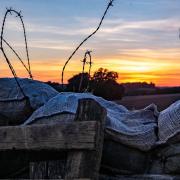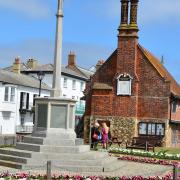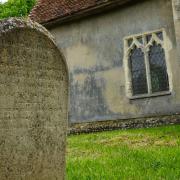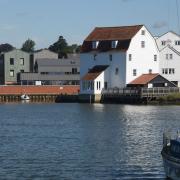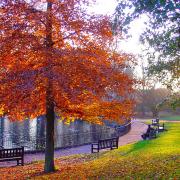An extraordinary tomb in Holy Trinity church celebrates an equally extraordinary resident of Long Melford, says Ross Gilfillan
How did a 16th century lawyer come to have such an extravagant final resting place? Ross Gilfillan explains all
Location, location. Where you choose to live has always been a reliable indicator of your standing in society. In the 16th century, where you chose to be buried, or interred, said just as much about the sort of man you had been. A splendid tomb on a prized site showed the world you’d arrived – even after you’d gone. The location of one of the most sumptuous tombs in Suffolk is so very nearly a plum one. You can find it in Holy Trinity Church in Long Melford, a church whose own location is prime, sitting atop the green at the end of the village’s famously long high street. In the chancel, to the right of the High Altar, where the eyes of the congregation must fall upon it, is an extravagant monument, an eye-popping piece of sculpture that celebrates the life and works of Sir William Cordell.Sir William died on 17th May, 1581. Since then, the altar has been much enlarged, relegating his magnificent monument to second place. But big, bold and beautifully decorated, this unusual example of English Renaissance sculpture is as impressive today as it was the day it was completed. Made from alabaster fine enough to be taken for white marble, the classically styled monument features a detailed effigy of Sir William himself in full armour. He reclines on an ornate tomb chest sheltered by coffered arches which are supported by Corinthian columns. At his feet is a weird beast, taken from his family crest. This is a cockatrice, head thoughtfully turned away – its gaze is supposed to be lethal.The armour is accurate for the period and extremely detailed: all the hinges, straps, hooks and eyes which join the various sections are clearly visible. The proportions of the tomb are harmonious and only the damage it has suffered over the centuries detracts from its impact.But there’s something rather curious. Despite its location in the most sacred part of the church, there’s nothing remotely religious about this tomb. The four figures beneath the arches aren’t saints, but the four cardinal virtues, Fortitude, Justice, Temperance and, exposing a bare breast to Sir William’s gaze, Prudence. Fearsome heads decorate the arches. This was all in line with a move away from religious imagery following the English Reformation. By the time Cordell’s tomb was carved by Cornelius Cure, there was a fashion for sculpture in which virtues were being celebrated in more secular ways.So what sort of man would commission such an exorbitantly expensive and unusual piece? From his armour, you might assume he was a soldier but in fact this only denotes his standing as a knight at arms and perhaps provides a visual link to another tomb in the church, that of Sir William Clopton, his wife’s ancestor. Sir William Cordell was a lawyer.Born to John Cordell and Emma Webbe in Edmonton some time towards the end of Henry VII’s reign, William is known to have been living in Melford in 1530. After a period of study at Cambridge, he was admitted to Lincoln’s Inn and was called to the bar in 1544. In the following year he became an MP and was made Speaker of the House of Commons in 1558. Queen Mary appointed him Solicitor General and in 1558, after being knighted, Master of the Rolls and member of the Privy Council. It was said that Cordell “rose to fame and fortune by his own industry and talents, unaided by any accident of birth.” He cemented his position in local society by marrying Mary Clopton, whose family was old, wealthy and much respected, and also by building Melford Hall, whose turreted structure stands in its own park, just across the green from Holy Trinity. This was a house fit for a queen and nothing better illustrates the vast wealth accumulated by Cordell than the hospitality he provided for Queen Elizabeth and her huge retinue in 1578. The scale of this entertainment is still talked of today. A contemporary account of the visit mentions “200 young gentlemen cladde alle in whyte velvet,” and “300 of the graver sort apparelled in black velvet...with 1500 servying men all on horsebacke.” According to this account, Cordell’s “grande feastinge...did lyght such a candle to the rest of the shire, that they were gladd bountifullie and franklie to follow same example.” I bet they were.It was perhaps in order to justify his wealth that Cordell founded in 1573 an almshouse on the green to house 12 brethren, a warden and two sisters, which still operates today. Cordell died at the Rolls House in Chancery Lane, a lawyer to the last. His monument in the church at Long Melford, due for careful renovation shortly, will ensure that he’s remembered to a long time to come.



